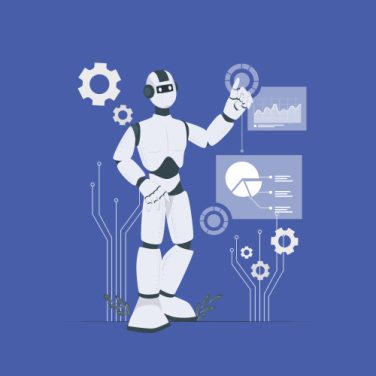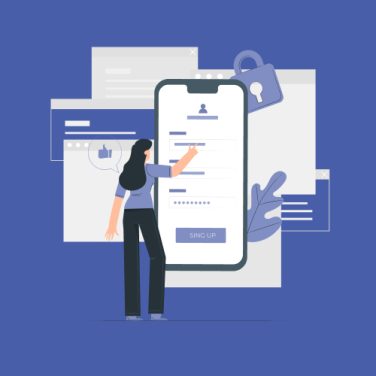As talent acquisition evolves, organisations worldwide are assessing how many companies use AI in hiring and what this surge means for competitive advantage.
Adoption of Artificial Intelligence in recruitment has risen sharply, with AI now automating screening, sourcing, and engagement workflows. This guide quantifies adoption rates, unveils global and regional trends, and outlines benefits and challenges facing HR leaders.
- Global statistics on AI recruitment uptake
- Industry-specific adoption benchmarks
- Key benefits and obstacles
- Actionable integration steps
MiHCM’s AI-powered offerings, including MiHCM Data & AI and SmartAssist, equip HR teams to make data-driven hiring decisions, streamline processes via seamless recruitment management, and uphold bias-free compliance.
Readers will gain clarity on current AI adoption in hiring, learn the future of AI in recruitment, and discover how to implement AI-driven recruitment strategies faster than competitors
Current adoption rates of AI in hiring
Recent surveys reveal that 40% of companies globally now use AI in hiring—a marked increase from 20% just two years ago. Compared to 2022, global utilisation doubled, underscoring rapid digitisation.
Survey data indicates momentum: 68% of HR directors plan to increase AI investment in 2025, reflecting confidence in improved time-to-hire and candidate quality. Analysts predict adoption will exceed 60% by year-end, driven by emerging AI in recruitment articles highlighting ROI and compliance benefits.
Industry breakdown: Leading sectors embracing AI
AI recruitment adoption is most advanced in technology, finance, healthcare, and retail:
- Technology (60%): Rapid innovation cycles demand proactive talent pipelining. Tech leaders use AI for skill matching and automated outreach.
- Finance (45%): Risk management and compliance drives AI screening to ensure unbiased candidate selection.
- Healthcare (30%): Staff shortages spur use of AI-powered vacancy forecasting and candidate engagement chatbots.
- Retail (25%): Seasonal hiring pressures motivate automated interview scheduling and digital assessments.
Driving factors differ by sector: tech companies prioritise predictive analytics to infer unstated competencies; financial institutions emphasise bias mitigation tools to satisfy regulatory bodies; healthcare providers seek efficiency to fill critical roles; retailers leverage AI for high-volume hiring peaks.
Benchmarks underscore performance: top tech firms reduced time-to-hire by 30%, financial services cut cost per hire by 20%, and healthcare networks improved candidate satisfaction scores by 25%. Case examples at Unilever illustrate AI-driven screening boosting diversity metrics by 40%. These benchmarks guide sector-specific AI adoption strategies for HR directors.
Barriers to AI adoption in recruitment
Despite benefits, obstacles slow broader AI uptake:
- Data Quality: Incomplete or inconsistent HRIS data undermines algorithm accuracy. Organisations must invest in data cleansing and standardisation.
- Cost Concerns: Up-front licensing and integration fees deter some mid-sized firms. Total cost of ownership models help forecast ROI.
- Regulatory Uncertainty: GDPR, EEOC, and emerging AI Act requirements raise compliance questions. Clarity on data usage and audit trails is essential.
- Loss of Human Touch: Perceived erosion of personal engagement worries recruiters. Hybrid models balancing AI automation with human oversight maintain candidate relationships.
- Technical Integration: Legacy HRIS systems often lack open APIs. Phased integration and API middleware can overcome this hurdle.
Strategies to overcome barriers include pilot programmes for incremental deployment, partnerships with AI-enabled HCM platforms, and cross-functional AI governance committees. By addressing data and compliance concerns proactively, HR leaders can accelerate AI hiring adoption with minimal disruption.
Strategic benefits reported by early adopters
Early adopters of AI in hiring report significant gains:
- Reduced Time-to-Hire: Companies using AI screening tools cut time-to-hire by up to 30%, accelerating candidate throughput.
- Lower Cost-per-Hire: Automation in sourcing and scheduling drives cost savings of approximately 20%.
- Enhanced Candidate Quality: AI-driven candidate matching improves first-year retention by up to 15%.
- Improved Diversity Metrics: Bias mitigation algorithms enable a 25% increase in hires from underrepresented groups.
- Recruiter Productivity: Automated resume parsing and interview scheduling frees 40% of recruiter time for high-value candidate engagement.
- Predictive Workforce Planning: Forecasting models anticipate hiring needs 6–12 months ahead, enabling proactive talent pipelining.
These strategic benefits demonstrate how AI in recruitment transforms operations. HR directors leveraging MiHCM’s Data & AI dashboards gain real-time visibility into these KPIs, supporting continuous improvement and informed decision-making.
How AI is redefining recruitment processes
AI is reshaping recruitment from reactive workflows to intelligent ecosystems:
- Proactive Talent Pipelining: Predictive analytics identifies potential candidates in advance, reducing reaction time.
- Automated Screening: Machine learning filters applications by skills and experience, eliminating manual resume review.
- Dynamic Job Matching: AI maps candidate profiles to role requirements, enabling real-time smart job offers.
- Enhanced Candidate Experience: Chatbots provide instant responses, scheduling, and progress updates, fostering engagement.
These innovations ensure consistent, objective assessment and accelerate hiring cycles. By leveraging the future of AI in recruitment, organisations transform hiring into a data-driven competitive advantage.
Core components of AI-driven talent acquisition
AI-driven talent acquisition comprises several integrated modules:
- Candidate Sourcing & Screening: Algorithms scan job boards and social profiles, performing semantic analysis to rank candidates.
- Interview Scheduling & Assessment: Automated calendars coordinate interviewer availability while AI-powered video assessments deliver structured evaluations.
- Offer Negotiation & Acceptance Prediction: Predictive models forecast acceptance likelihood and optimise compensation packages in real time.
- Onboarding Personalisation: AI assistants craft tailored onboarding schedules, track compliance tasks, and provide virtual tours.
These components work together to reduce bias, improve efficiency, and enhance the overall candidate journey across the talent acquisition lifecycle.
Enhancing candidate matching and onboarding with AI
AI advances candidate matching and onboarding through sophisticated tools:
- Resume Parsing & Semantic Analysis: Natural language processing extracts skills, experiences, and competencies with precision.
- Chatbots & Digital Assistants: Virtual agents engage candidates 24/7, answer FAQs, and guide applicants through assessments.
- Personalised Onboarding Journeys: With AI-powered chatbots, new hires receive customised welcome schedules, VR orientation, and automated document collection.
- Continuous Feedback Loops: Real-time sentiment analysis captures candidate feedback, enabling rapid refinement of processes.
By combining these technologies, organisations boost match accuracy and accelerate integration of new employees into productive roles.
Ensuring compliance and ethical AI hiring
Maintaining legal and ethical standards is vital in AI recruitment:
- Regulatory Frameworks: GDPR in Europe, EEOC guidelines in the US, and the EU AI Act mandate transparent data handling and bias mitigation.
- Ethical Guidelines: Organisations should adopt fairness checklists, eliminate protected class indicators, and validate models for disparate impact.
- Human Oversight & Audit Trails: Regular reviews by HR and legal teams ensure algorithmic decisions align with company values and legal requirements.
- Transparency Practices: Clear candidate communication about AI usage builds trust and supports consent-based data processing.
Adherence to these best practices enables compliant, responsible AI hiring across jurisdictions.
Key metrics: Measuring efficiency and objectivity improvements
Evaluating AI’s impact requires tracking core KPIs:
- Time-to-Hire: Monitor reductions against baseline averages to quantify speed improvements.
- Cost-per-Hire: Compare recruiting spend with and without AI support for ROI analysis.
- Applicant-to-Hire Ratio: Assess screening efficiency by tracking the ratio of applicants reviewed to hires made.
- Diversity & Inclusion KPIs: Track gender, ethnicity, and minority representation against targets.
- Candidate Satisfaction & NPS: Survey applicants post-process to gauge experience quality.
- Continuous Monitoring: Utilise MiHCM Data & AI dashboards for real-time visualisation of these metrics and automated alerts.
Regular metric reviews support iterative optimisation and objective measurement of AI’s value in recruitment.
AI use cases in HR beyond recruitment
- Internal Mobility Recommendations: AI scans employee skills and performance data to suggest career paths and open roles.
- Performance Prediction & Turnover Analysis: Predictive models forecast employee flight risk, enabling proactive retention interventions.
- Workforce Planning & Shift Scheduling: Algorithms optimise shift patterns based on demand forecasts and employee availability.
- Absenteeism Trend Forecasting: AI analyses historical attendance data to predict and mitigate absenteeism spikes.
These extended use cases illustrate AI’s broader impact on HR operations, driving productivity and strategic workforce management.
Best practices and roadmap for integrating AI in your hiring workflow
Step 1: Data Assessment and Integration: Assess current HR tech stack and data maturity. Cleanse legacy data and ensure API connectivity. Align on goals to make faster, data-driven hiring decisions.
Step 2: Pilot and Iterate: Select focused use cases—resume parsing, candidate matching, or onboarding personalisation—and run controlled pilots. Leverage recruitment process capabilities for candidate management and schedule automated interviews. Track performance against baseline KPIs: time-to-hire and quality-of-hire.
Step 3: Scale and Govern: Expand successful pilots across teams. Establish AI governance with regular audits, ethical oversight, and change management training for recruiters. Utilise AI for strategic decision-making to forecast hiring needs and optimise workforce allocation.
Partnering with MiHCM and following these steps empowers HR directors to accelerate AI adoption, reduce time-to-hire, and improve candidate quality while maintaining governance and transparency.
Next steps: Preparing for AI-driven talent acquisition
Organisations that have delayed AI adoption can kickstart progress with this checklist:
- Assess current HR processes and identify high-impact automation areas.
- Provide AI literacy and change management training for recruiters and hiring managers.
- Select a vendor offering integrated modules and robust compliance support.
- Define governance structures with clear roles, audit processes, and ethical guidelines.
- Position AI hiring as strategic advantage in talent acquisition roadmaps.
By addressing data readiness, securing executive sponsorship, and establishing governance, HR leaders can transform recruitment into a proactive, intelligence-driven function. Early action positions companies to capture efficiency gains, elevate candidate experiences, and build stronger talent pipelines.



